Efficient energy use from one person to all people : the promoting development of the nation
Off-shore has great potential for national income and if the extractable resources in the oil and gas industry are to be found,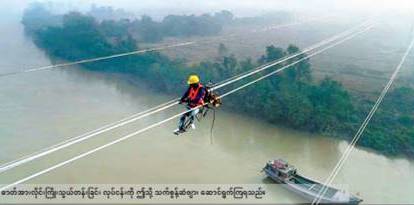 there are stable revenues coming to the Republic of the Union of Myanmar in short period of time for over 20 years.
there are stable revenues coming to the Republic of the Union of Myanmar in short period of time for over 20 years.
Dr. Tun Naing Deputy Minister for Electricity and Energy (MOEE)
ONE can measure a country’s success by observing individual use of electricity. Only the citizens of wealthy countries are able to enjoy electricity while poorer countries are not able to produce as much for its inhabitants. Myanmar, likewise, is striving towards bringing electricity to all citizens of Myanmar.
It is of grave importance for developing country such as Myanmar to provide its citizens electricity for their use.
The Deputy Minister for Electricity and Energy (MOEE) Dr.Tun Naing highlights the achievement of the 3rd year of the current administration where there is a 10.7 percent increase in usage to 370 KW hours per one person. When examining the country as a whole, it is evident that the only the main big cities are able to get access to electricity while a lot of the rural areas continue to have difficulties for such access. This is due to the need for the infrastructure for power lines in hard to reach rural countryside.
Electricity for all in 2030
Currently, only 44 percent of the whole of Myanmar have access to a power grid. MOEE aims to increase this number to 55 percent in 2020-2021, up to 75 percent for
2025-2026 and 100 percent by the year 2030-2031. “We were able to increase the output by 12 percent from the previous year. During the current administration’s first year in office, we were able to increase output by 13 percent compared to the previous,” claimed the Deputy Minister.
Usage up to 3700 MW during summers
It is currently the time of the year where we are at the peak of electricity usage in the country. The Ministry expects the number to increase from the 3700 MW which is the current peak as summer approaches. The maximum for electricity usage in 2015 was 2350 MW, 2670 for 2016 and 2900 for 2017. The number got boosted by 400 MW in 2018, an increase of 12 percent.
“An increase of electricity up to 400 MW within one year indicates the need for bigger and better infrastructure along with the funding for long-term growth and sustainability. The hydropower plants, which require less time for set up, have proven to be able to produce more than its designs predicted. Hence, the increase in production,” explains the Deputy Minister on how the ministry copes with the ever increasing level of electricity usage.
Increasing Output
The electricity production capacity of the Baluchaung No1 hydropower plant is 200 Million KW hours per year. However, after we have managed to expand the production capacity it can produce up to 213 Million KW hours peryear. Likeswise, Lawpita plant has also produced 1262 MW hours even though it was designed for 1190, rivaling that of a mid-sized production plant. Baluchaing 3 and Kinda powerplant, Mone hydroplant, Paunglanug, Sedawgyi, Shwe Kyin, Tha Pein Seit have also produced similar results, increasing production. MOEE also reported that in addition to increasing
output from existing factories during the administration’s 3rd year in office, there were several power plants constructed as well including the two Myingyan Township natural
gas power stations, Kyakse natural gas power station, a powerplant in Thatone and two Nam Htun hydro powerplants.
Increasing Transmission Capabilities
In order to distribute electricity to all of Myanmar, more power lines have to be built. The administration has extended several power lines including a 230 KV line and
eleven 66 KV lines totaling up to 2449 miles. There were also up to1336 MVA added to the power grid through one 230 KV transformer, 29 66KV transformers, 10 33KV transformers and 4338 11/0.4 KV transformers.
“In 2016 March, there were only 34 percent of the total households that had access to electricity. By the end of February this year, the number jumped 44 percent to
3.8 million, an increase of 450,00 households. If you look at the total within the past three years, you can see that there is a 10% increase in the number of households that had access to electricity,” further explained the Deputy Minister.
Working towards providing electricity for small towns and villages
Most of the urban areas have access to electricity. However, there are areas that still need access which the government is working towards.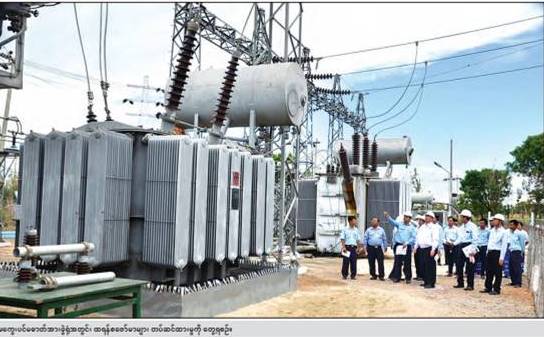 Within a year, the administration was able to provide 7 towns including Ta Kaung and 2331 villages with electricity. “We weren’t able to get the grid to extend to Manaung in Rakhine. However, we’re trying to build a solar factory there. We have up to 54% coverage rate with 33894 out of 63277 villages covered,” added the Deputy Minister.
Within a year, the administration was able to provide 7 towns including Ta Kaung and 2331 villages with electricity. “We weren’t able to get the grid to extend to Manaung in Rakhine. However, we’re trying to build a solar factory there. We have up to 54% coverage rate with 33894 out of 63277 villages covered,” added the Deputy Minister.
Usage exceed Capacity
The public is fully aware of the shortcomings of the grid not being able to distribute to fulfill the demand of the citizens. “People are using more electricity in their homes, factories are exceeding their quotas and there is also a lack of funding for new distribution networks and transformers. This creates difficulties for the residents and we are working towards preventing that this year. Hence, the addition of 1352 MVA transformers,” explained the Deputy Minister regarding the current distribution situation.
System Breakdown
This is a term widely popular amongst the citizens as a majority of them has experienced temporary blackouts due to systems not being upgraded on time. There were 17 reported breakdowns during 2016-17 which were more frequent in areas that experienced natural disasters such as storms, strong winds and heavy rains, sometimes leading to power lines falling.
“There have only been two system breakdowns during the previous year due to Tele-protection and Auto-Reclosing Function. We were able to fix whenever a power line snaps immediately which is a very good preventative measure,” stated the Deputy Minister on the improvements.
Increase in Hydropower
Myanmar relies heavily on hydropower sources.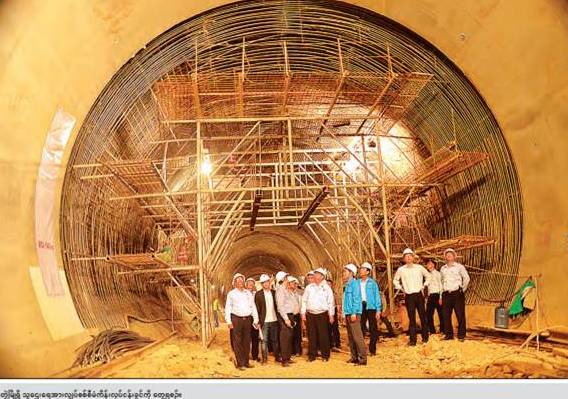 The Ministry is currently working towards to diversify with other natural resources Myanmar is abundant in. For instance, solar is utilized in Minbu Township, Magway by a public company which is reported to be producing 20MW coming April with plans to add another 20 MW after its first stages.
The Ministry is currently working towards to diversify with other natural resources Myanmar is abundant in. For instance, solar is utilized in Minbu Township, Magway by a public company which is reported to be producing 20MW coming April with plans to add another 20 MW after its first stages.
Changing Meters
Additionally , the administration has started to work on changing the household meters from analogue to digital starting last year. MOEE have reportedly changed up to 400,000 meter boxes within the past year including13616 3/30 A boxes, 180848 10/30 A boxes for smaller towns and 99085 10/60 A for cities. These new changes have reduced usage for the rural communities as it charges based on the type of household equipment you use. The authorities also report that these boxes are harder to steal or temper with. “We are working towards getting more funding to provide the public with more access to electricity. Applications were sent in to World Bank, JICA and other donor agencies for loans with minimal interest. There are also national, state and regional budgets dedicated to upgrading our power grid as well,” remarked the Deputy Minister.
Increase in Demand for Electricity
When compared to 30 years ago, the demand for electricity has doubled and is expected to double yet again by 2025. This proves to be a great challenge for the MOEE.
“The Ministry needs a lot of updated technology, the labor and budget. People want reliability - they do not constant blackouts, altering voltages and bad service. And we are working towards giving the best we can such giving notices for blackouts. However, there is still a gap between the amount of people we can employ and the amount we need,” comments the Deputy Minister on the challenges the Ministry faces. The statement is confirmed by other employees that a shortage and other obstacles of hiring skilled labor is often overlooked by the public.
Need for Customer Service Department
The Deputy Minister stated, “People want a customer service hotline they can call when the lights go out. However, we need manpower -the person, the van- to be able to be dispatched to problem areas. This problem remains unsolved.”
The electric sector is also facing loses – 422 billion Kyats in the financial year 2016 - 17 alone. This is the business in the production sector that reported losses, According to the documents published by the MOEE. The ministry expected to lose over 360 billion Kyats this financial year but the figure came out to be 422 billion Kyats. MOEE is trying to reduce production costs for electricity as the business is expected to lose over 600 billion kyats in the 2017-18 financial year.
Cover losses, expand production
The government is trying to expand hydropower plants as they have proven to be more profitable as it has a lower cost of production. “We can only manage our losses by producing more for less cost. Because we had the needs of the people at heart to produce as much as we can, we were able to cover 162 billion kyats in losses (106 million in USD),” explained the Deputy Minister.
With the 6 month budget estimates approaching with 309 billion kyats in losses, the ministry to trying to save almost 76 billion kyats in losses before the end. “We are working towards cutting our losses as much as possible,” the Deputy Minister declared.
MOEE has reported that there was an increase from 110 kyats per unit to 115 kyats per unit production cost with the selling price was increased from 35 kyats to 50 Kyats. However, MOEE is still struggling to close the gap between production costs and selling price in order to cover for the big losses. “This may require a more fair approach to the pricing system,” the Deputy Minister suggested, “The loss is for 44 percent of the population while the operation costs are for 100 percent of the entire population. We have to think about the other 56 percent which is why MOEE is working diligently to bringing electricity to all. We also encourage people to think about the rest of the population who don’t have access yet and try to consider saving as much energy as possible so they don’t go to waste.”
Solutions for the Energy Problem
The energy, much like the electricity sector, is crucial to the development of Myanmar.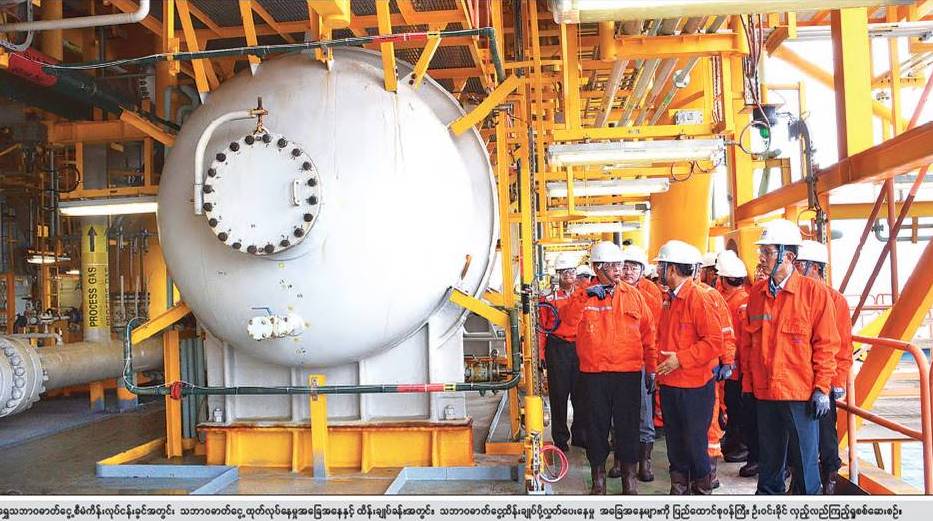 Only when the energy sector advancements as a whole, the electricity sector will be able to participate in the upgrade and fulfill the demand of energy of the population. The country generates income from selling energy via the extractive industries, specifically the oil and gas exploration and drilling. Before drilling for oil and gas, there must be several exploration holes. “The current administration has been able to explore to 22 wells within a year onshore. Among them, the 22 wells have produced up to 2.31 million barrels of oil and 1901.9 million cubic meters of natural gas,” stated the Deputy Minister.
Only when the energy sector advancements as a whole, the electricity sector will be able to participate in the upgrade and fulfill the demand of energy of the population. The country generates income from selling energy via the extractive industries, specifically the oil and gas exploration and drilling. Before drilling for oil and gas, there must be several exploration holes. “The current administration has been able to explore to 22 wells within a year onshore. Among them, the 22 wells have produced up to 2.31 million barrels of oil and 1901.9 million cubic meters of natural gas,” stated the Deputy Minister.
In addition to on-shore drilling, there have been 46 off shore drilling wells producing up to 1/02 million oil barrels and 604818 million cubic meters of gas. According the reports by MOEE, there were a total of 3.33 million barrels of oil and 623838 million cubic meters of natural gas produced - both on-shore and off-shore.
Off-shore has great potential for national income and if the extractable resources in the oil and gas industry are to be found, there are stable revenues coming to the Republic of the Union Myanmar in short period of time for over 20 years. In addition to the income, the country will also be able to produce more output to build infrastructure, distribute electricity and increase foreign investment. Therefore, the Ministry is working towards discovering new prospects along with examining four new off-shore prospects -A6, AD1, AD7 and M3.
The Deputy Minister shares the good news: “Two of the Shwe Yi Htun drill wells out of five –located in A6 off the Northwest coast of Ayeyarwaddy are showing good prospects regarding natural gas potential and looks economically feasible.” MOEE is hoping oil and natural gas may be the solution to energy problems. There are also an 18 plots on-shore and additional 15 potential plots on-shore that can be further explored. Myanma Oil and Gas Enterprise (MOGE), in accordance with its transparency initiative, have called public tenders for a joint venture so they can attract international energy players.
“We refine the oil produced onshore in country. In the previous financial year, we produced 251,509 metric tonnes of oil and processed up till 67080 metric tonnes of petrol and 110242 metric tonnes of diesel with an increase of 38 percent in revenue for the sales,” claims the Deputy Minister.
MOEE has historically produced and sold oil and gas. However, with the current processing of onshore produce, 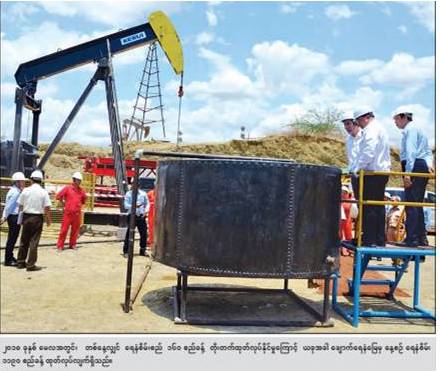 there have been several limitations to manufacturing LPG. The administration have collaborated with the private sector in trying to meet the unfillable demands of LPG from the citizens whose choices are shifting. According to the numbers from the ministry, there has been over 8858 metric tonnes of LNG produced from on-share drill holes so that residents can use the product at an affordable price with easy access to purchasing. The Deputy Minister noted: “We have licenses for rights to operate. There are altogether 7 different kinds and we have issued up till 629 in the 3rd year of our administration alone. We are aiming for the industry to be accessible across country.”
there have been several limitations to manufacturing LPG. The administration have collaborated with the private sector in trying to meet the unfillable demands of LPG from the citizens whose choices are shifting. According to the numbers from the ministry, there has been over 8858 metric tonnes of LNG produced from on-share drill holes so that residents can use the product at an affordable price with easy access to purchasing. The Deputy Minister noted: “We have licenses for rights to operate. There are altogether 7 different kinds and we have issued up till 629 in the 3rd year of our administration alone. We are aiming for the industry to be accessible across country.”
In the same way, there are plans to use the products from the extractive industry as fertilizer from the MOEE. There were a total of 127, 941 metric tonnes of fertilizer. The fertilizer factory brought in 71 billion kyats more compared to the previous year. The fertilizer industry used to show a loss of 50 billion kyats annually. This problem, however, was solved by the currently administration during its third year.
“It wasn’t easy. The success I mentioned came from the hard work, change and improvements in our department. To do such feat, we need motivated employees and the proper rules and procedure that foster development along with public support.
There have been a lot of unforeseen obstacles for the Ministry exploring drill holes in the extractive industries in hopes that great results 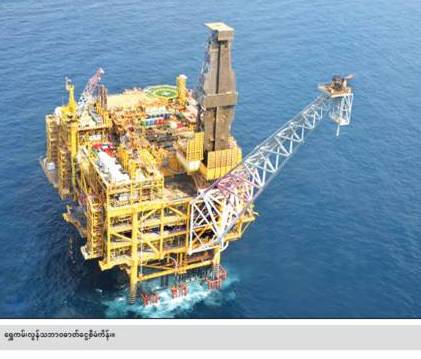 will bring forth an increase in the Gross Domestic Product of the country. A representative comment “You are working with people who own the land too -the farmers- because you are working on an onshore site and that calls for negotiations between the countries.”
will bring forth an increase in the Gross Domestic Product of the country. A representative comment “You are working with people who own the land too -the farmers- because you are working on an onshore site and that calls for negotiations between the countries.”
The Energy industry is directly related to the country and its citizens’ development. As we are approaching summer and with the industry heavily reliant on hydro power, there might be shortages in the supply. However, as technology gets better, they are more efficient air coolers being manufactured. We also like to urge the public to use electricity for their necessary proceedings and reserve as much as possible by keeping in mind of our fellow countrymen who doesn’t have access.
(Translated by Myat Thu)